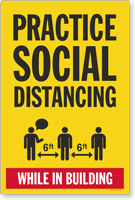That is one of the (many) million dollar questions during this COVID-19 pandemic. Whatever the answer, public health recommendations to wear masks and keep distance from others are both necessary and precautionary as cases continue to rise in the United States. An excellent review of the science by Jayaweera et al. is found here: https://www.sciencedirect.com/science/article/pii/S0013935120307143?via%3Dihub. Conclusion: we need more research to understand the virus as well as to make evidence-based decisions around prevention.
Tag: who
Pandemic EpiSpeak

Students who have taken one of my classes in epidemiology at CGU will probably remember me saying that learning epidemiology is, in many ways, comparable to learning a new language. Like many other fields, in epidemiology, we use specific words to indicate specific things. Hopefully my students are having fond memories right about now of the terminology we learned in class, for example, to describe disease occurrence in populations.
Our “EpiSpeak” also includes terms used in efforts control epidemics, as we are currently with the COVID-19 pandemic. I’ve heard some mixing of terms circulating such as referring to our stay-at-home order as “quarantining”.
Here is some clarity on three key terms: isolation, quarantine and physical distancing (also called social distancing) citing the World Health Organization.
“Isolation means separating people who are ill with symptoms of COVID-19 and may be infectious to prevent the spread of the disease.”
“Quarantine means restricting activities or separating people who are not ill themselves but may have been exposed to COVID-19.” By anticipating who might become sick, the goal is to prevent spread of the disease at the time when people just develop symptoms.
“Physical distancing means being physically apart. WHO recommends keeping at least 1-metre (3 feet) distance from others. This is a general measure that everyone should take even if they are well with no known exposure to COVID-19.” A goal of physical distancing is to slow the spread of disease by reducing the number of interactions we have with each other.
Be a steward of epi and apply these terms precisely! A benefit of this, I hope, is that we can reduce some of the confusion that is circulating and help to answer the question, “what can I do in the face of this pandemic”?
Staying abreast of the coronavirus situation
The novel coronavirus is a rapidly changing situation for public health. I personally have found that some of the information I read in the morning newspaper may already be outdated by the time I am driving into work and listening to news coverage on the radio. This, coupled with the sheer number of sources of media can inevitably be confusing and difficult to follow. It is good to stay updated on the situation in order to be informed of recommendations by public health professionals. Pick a few sources that are trustworthy and check them regularly.
For example:
The Los Angeles County Department of Public Health has a webpage dedicated to the novel coronavirus: http://publichealth.lacounty.gov/media/Coronavirus/ as does the Riverside University Health System: https://www.rivcoph.org/coronavirus and the San Bernardino Department of Public Health http://wp.sbcounty.gov/dph/coronavirus/
One of our local public radio stations, KPCC 89.3 FM, is regularly broadcasting live updates from the Los Angeles County Department of Public Health.
Or you can follow the Centers for Disease Control & Prevention (CDC) @CDCgov or the World Health Organization (WHO) @WHO on Twitter which both offer daily briefings on the coronavirus.